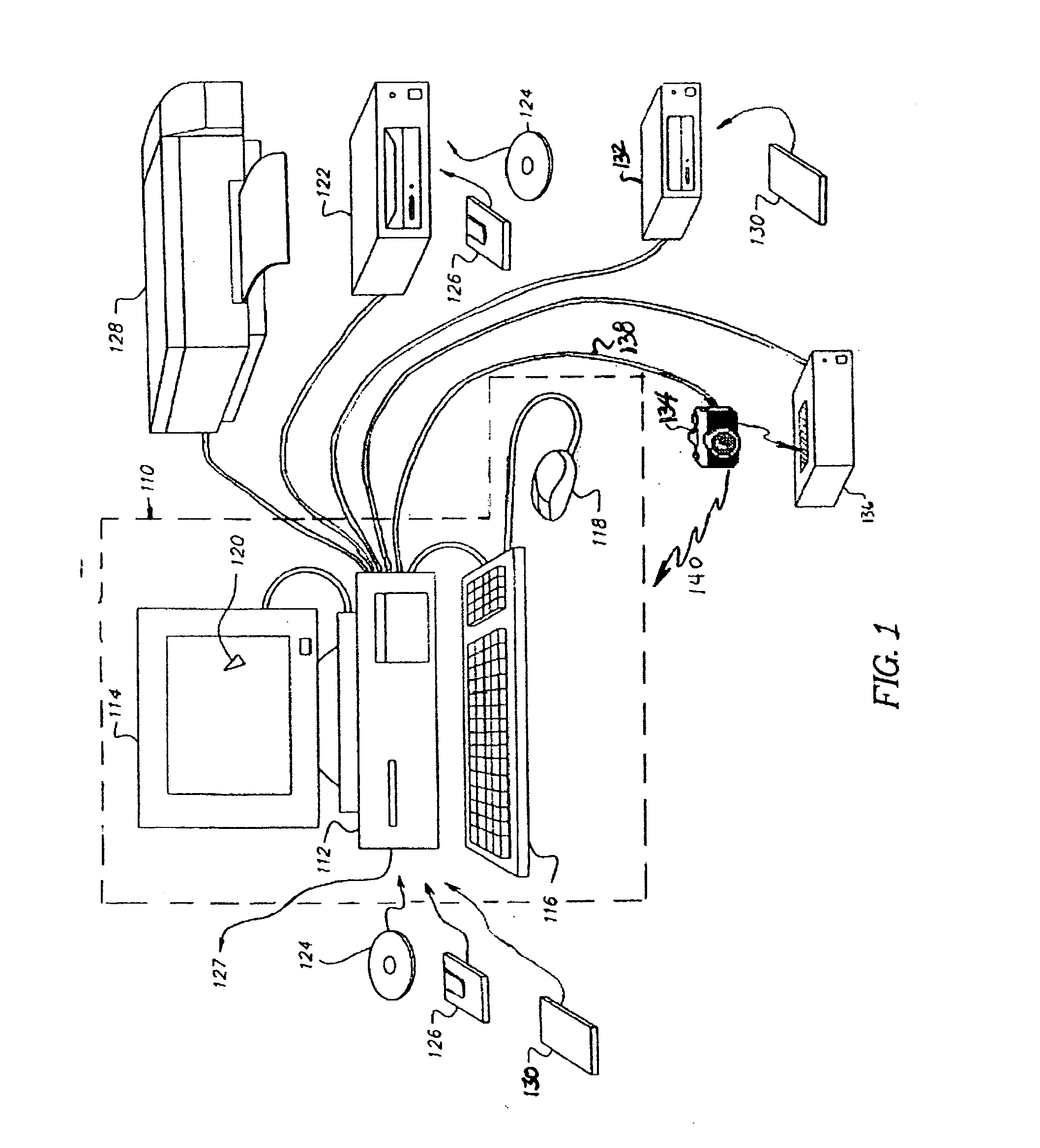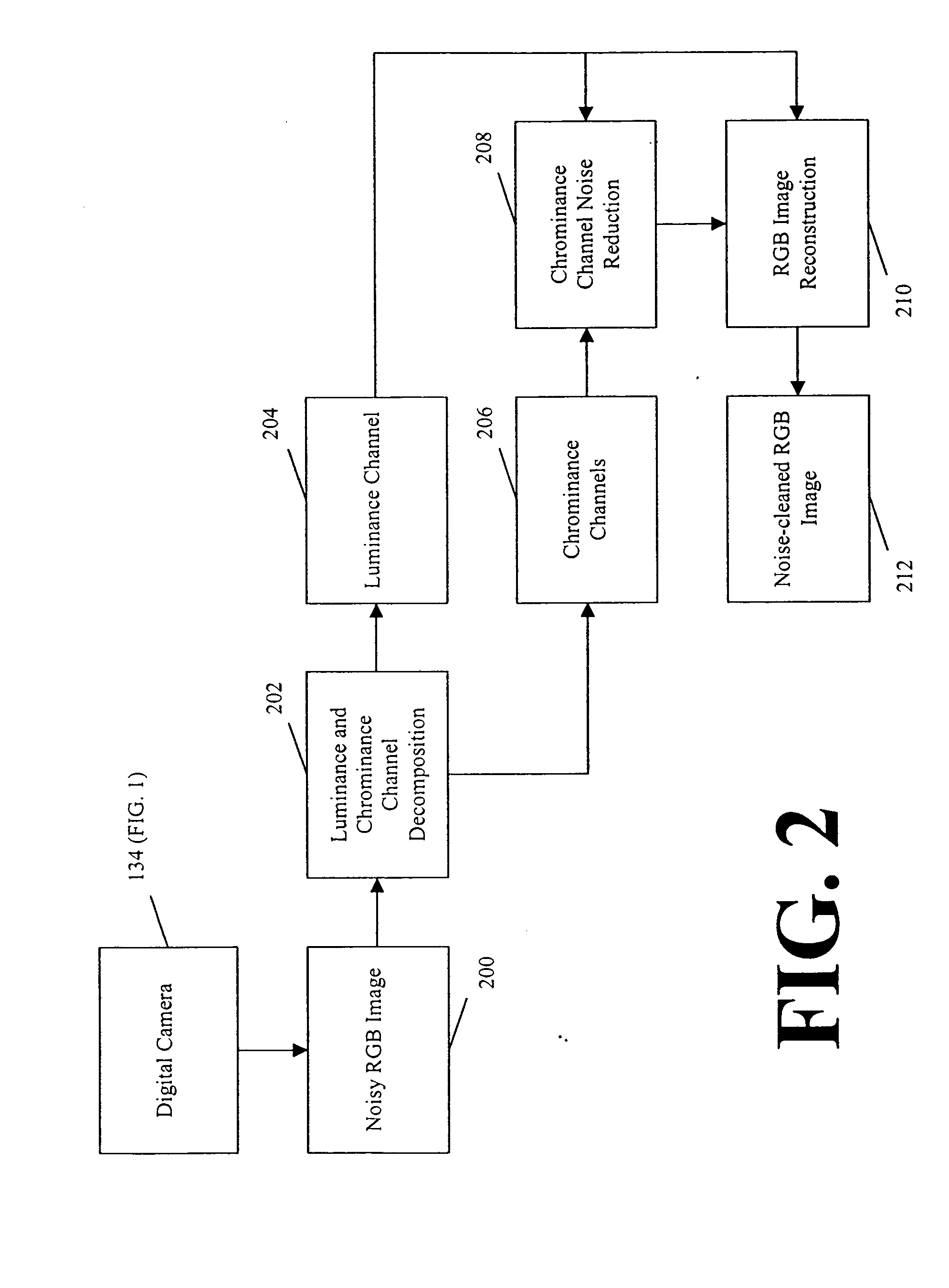Filtered noise reduction in digital images
a digital image and noise reduction technology, applied in image enhancement, image analysis, color signal processing circuits, etc., can solve the problems of reducing the luminance content of the image by a large amount, and reducing the noise in the digital image, so as to reduce the noise, reduce the noise, and reduce the noise. effect of digital imag
- Summary
- Abstract
- Description
- Claims
- Application Information
AI Technical Summary
Benefits of technology
Problems solved by technology
Method used
Image
Examples
embodiment 216
[0030]FIG. 6 is a high level diagram of an alternate embodiment. The digital camera 134 is responsible for creating an original red-green-blue (RGB) image that presumably contains noise (noisy RGB image) 200. This image is first decomposed into luminance and chrominance channels 202 as previously described. The luminance values together compose the luminance channel 204 and the chrominance values together compose the chrominance channels 206. The luminance channel is passed to the luminance channel noise reduction block 214 in which the noise in the luminance channel is reduced. The noise-reduced luminance and (original) chrominance channels are then passed to the chrominance channel noise reduction operation 208 in which the noise in the chrominance channels is reduced as previously described. After block 208, the noise-reduced luminance and noise-reduced chrominance channels are converted back into RGB channels in the RGB image reconstruction step 210 as previously described. The ...
embodiment 220
[0032]FIG. 8 is a high level diagram of an alternate embodiment. The. digital camera 134 is responsible for creating an original red-green-blue (RGB) image that presumably contains noise (noisy RGB image) 200. This image is first decomposed into luminance and chrominance channels 202 as previously described. The luminance values together compose the luminance channel 204 and the chrominance values together compose the chrominance channels 206. The luminance channel is passed to the luminance channel noise reduction block 214 in which the noise in the luminance channel is reduced as previously described. The noise-reduced luminance and (original) chrominance channels are then passed to the double-pass chrominance channel noise reduction operation 218 in which the noise in the chrominance channels is reduced. After block 218, the noise-reduced luminance and noise-reduced chrominance channels are converted back into RGB channels in the RGB image reconstruction step 210 as previously de...
embodiment 222
[0034]FIG. 10 is a high level diagram of an alternate embodiment. The digital camera 134 is responsible for creating an original red-green-blue (RGB) image that presumably contains noise (noisy RGB image) 200. This image is first decomposed into luminance and chrominance channels 202 as previously described. The luminance values together compose the luminance channel 204 and the chrominance values together compose the chrominance channels 206. The luminance and chrominance channels are then passed to the double-pass chrominance channel noise reduction operation 218 in which the noise in the chrominance channels is reduced. After block 218, the noise-reduced luminance and noise-reduced chrominance channels are converted back into RGB channels in the RGB image reconstruction step 210 as previously described. The results of block 210 compose the noise-cleaned RGB image for this embodiment 222.
[0035] The noise reduction algorithm disclosed in the preferred embodiment(s) of the present i...
PUM
 Login to View More
Login to View More Abstract
Description
Claims
Application Information
 Login to View More
Login to View More - R&D
- Intellectual Property
- Life Sciences
- Materials
- Tech Scout
- Unparalleled Data Quality
- Higher Quality Content
- 60% Fewer Hallucinations
Browse by: Latest US Patents, China's latest patents, Technical Efficacy Thesaurus, Application Domain, Technology Topic, Popular Technical Reports.
© 2025 PatSnap. All rights reserved.Legal|Privacy policy|Modern Slavery Act Transparency Statement|Sitemap|About US| Contact US: help@patsnap.com



